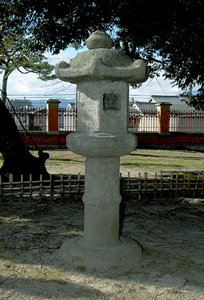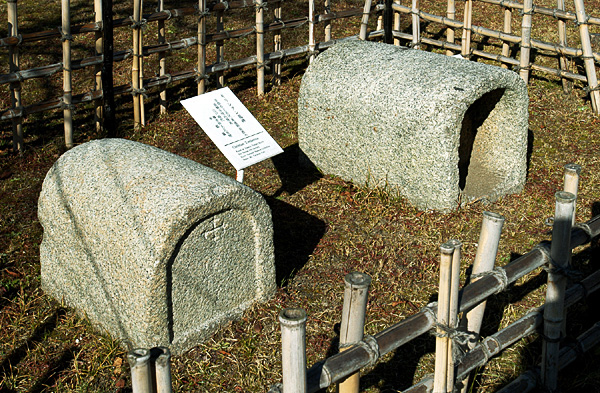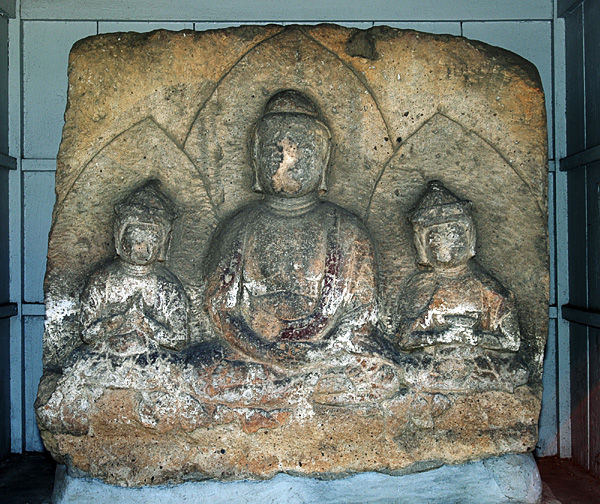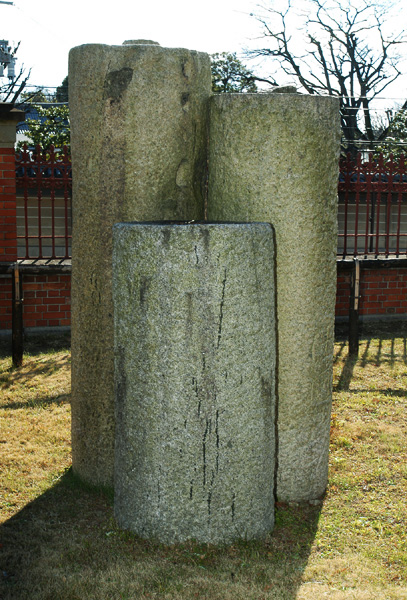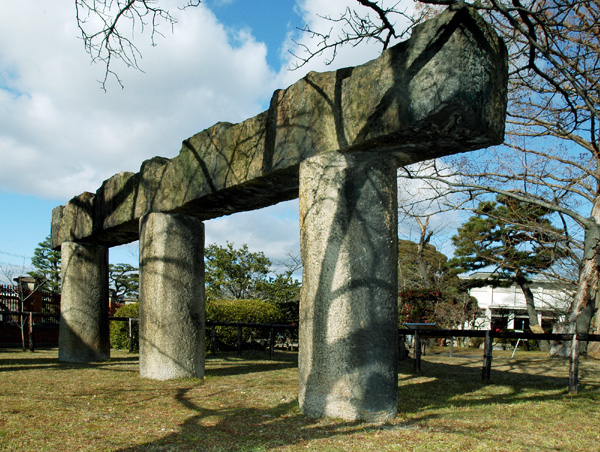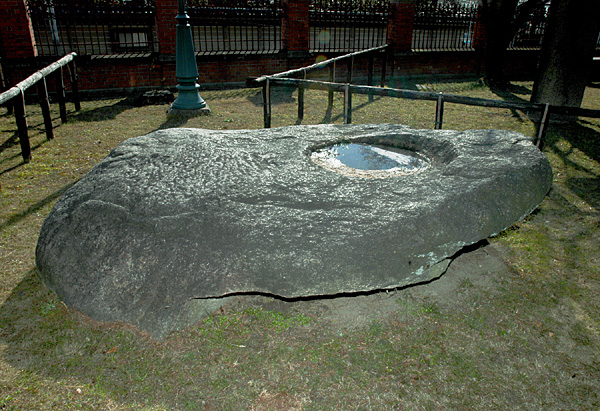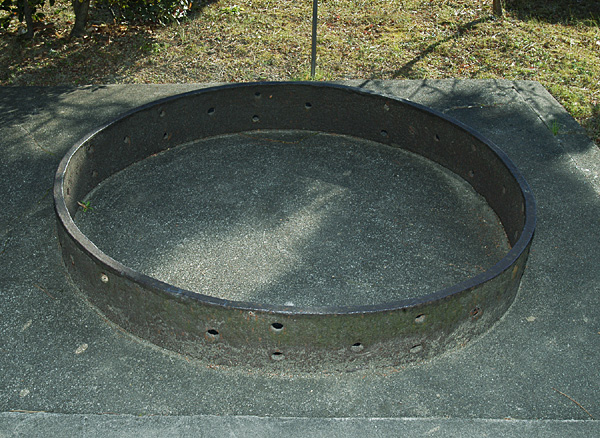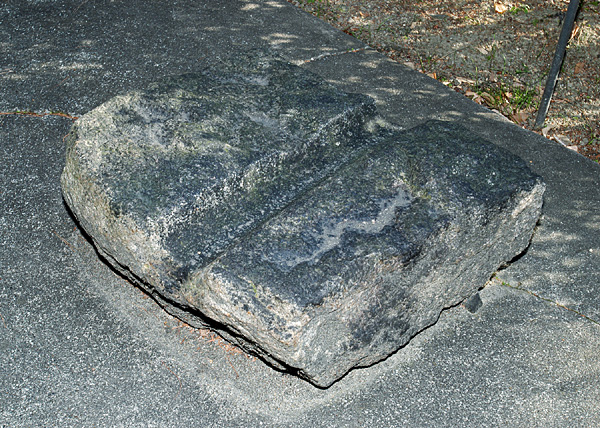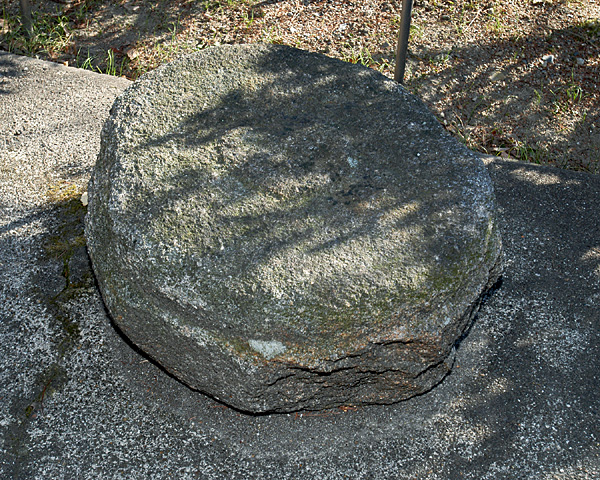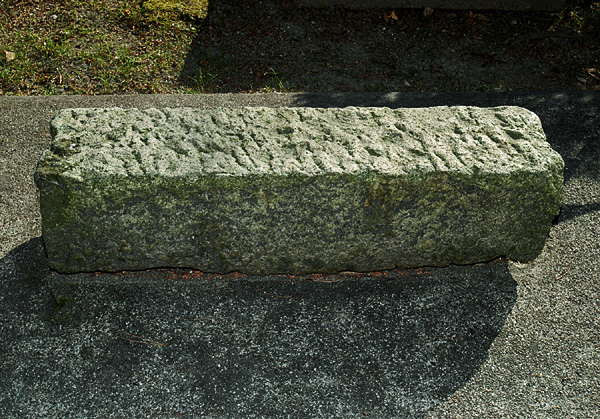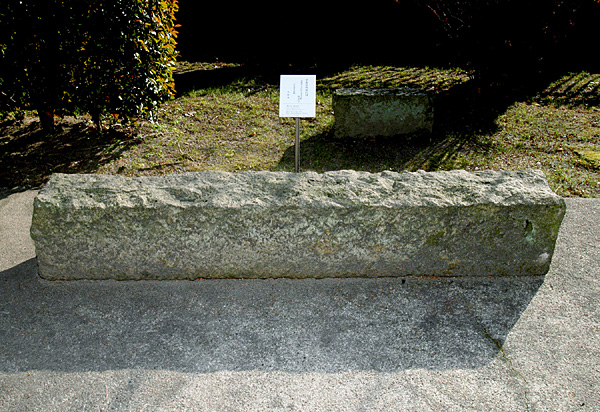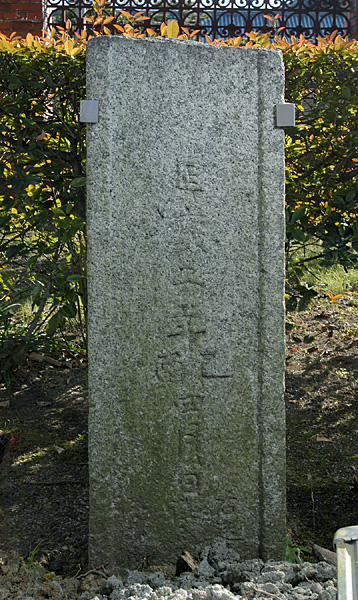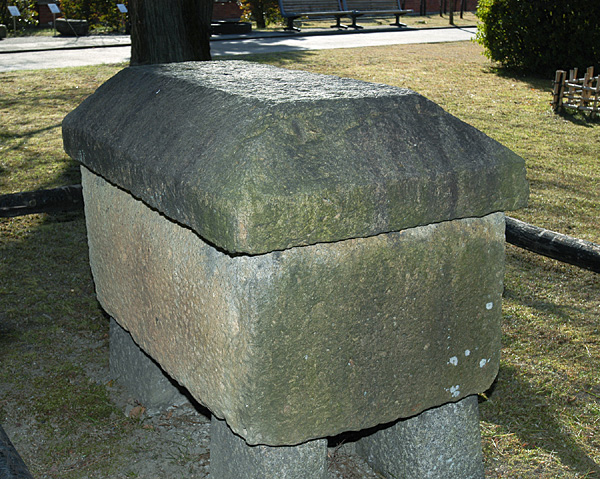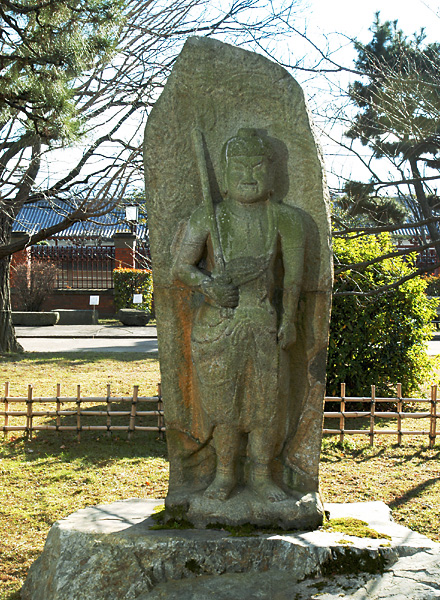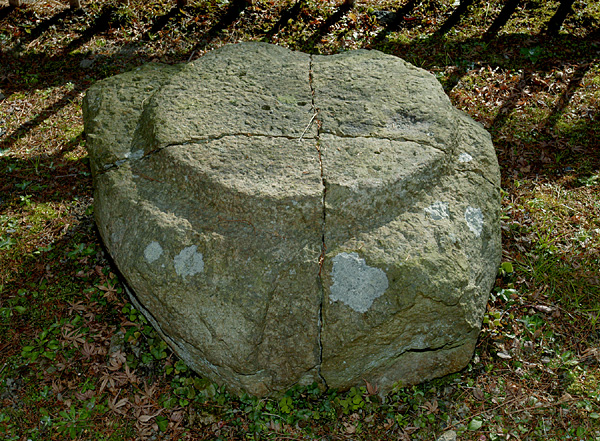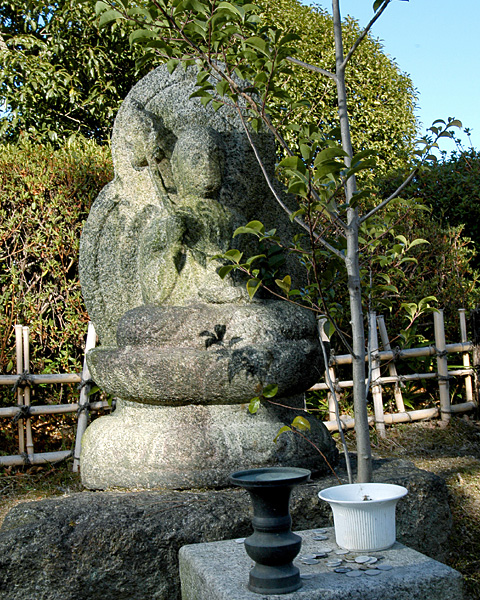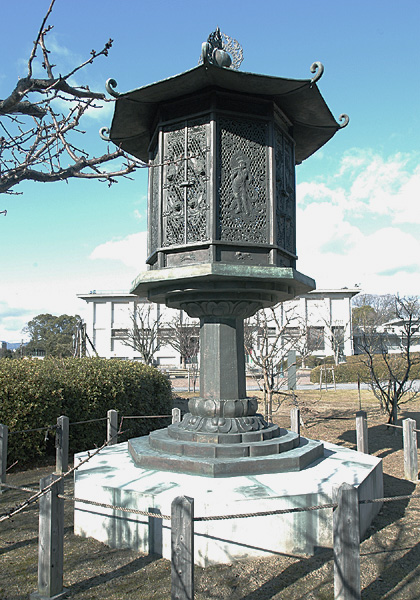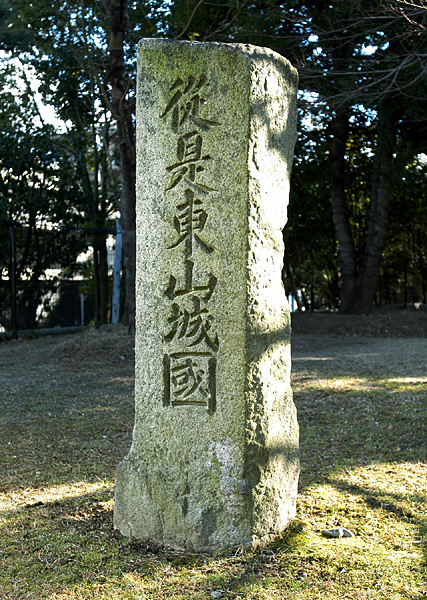West Garden
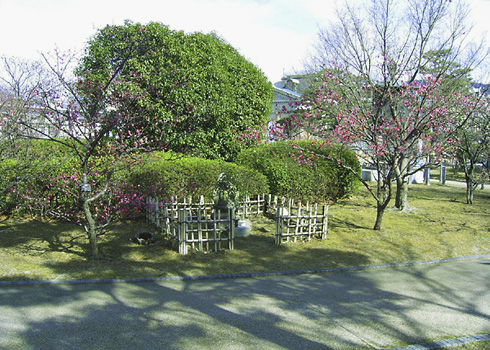
Early stone Buddhas, foundation stones, and bridge posts can be found in the West Garden, located in the southwest corner of museum grounds. View this outdoor exhibit, while taking a short walk or break.
West Garden
- Stone Lantern
- Japan, Kamakura period (1185-1333)
Gift of Hiroshi Yamaoka
Kyoto National Museum - This lantern originally lit the entrance to a Buddhist hall.
- Christian Tombstones
- Japan, Edo period, 17th century
*Discovered on the grounds of An'yo-in Temple, Kyoto
*Discovered on the grounds of Seigan-ji Temple, Kyoto
Gift of Fujii Teruhisa
Kyoto National Museum - These tombstones were made for Japanese Christians in the Keichō era (1596-1615). Most of these grave markers were destroyed in the Edo period (1616-1867), during the persecution of Christians by the Tokugawa government. Carved on the front of the stones are a cross, the letters IHS (representing the Latin for the followers of Christ), the Western year of death, and the baptismal name of the deceased.
- Amida Triad
- Japan, Heian period, 12th century
Excavated from Takeda-cho, Fushimi Ward, Kyoto
Anrakuju-in - The Buddha Amida (Skt., Amitabha) sits here flanked by his two attendant bodhisattvas, Kannon (Skt., Avalokitesvara) and Seishi (Skt., Mahasthamaprapta). Belief in Amida's Pure Land (J., Jodo) in the Western Paradise was popular during the late Heian period (794-1185), when it was believed that Buddhism had entered the degenerate age of mappo, the end of the Buddhist teaching. Many Amida triad images were produced during this time, though examples in stone, such as this, are rare.
- Stone Bridge Pillars
- Japan, Momoyama period (1573-1615)
Kyoto National Museum
*Pillars from Gojō Bridge
*Pillar from Sanjo Bridge with inscription, Tenshō 17 (1589), Tsu no kuni Mikage, auspicious day of the seventh month
- Gojō Bridge Pillars and Beam
- Inscription, "Tsu no kuni Mikage, auspicious day of the fifth month of Tenshō 17 (1589)" Japan, Momoyama period (1392-1572)
Kyoto National Museum - The pillars and beams, dated Tenshō 17 (1589), were part of the construction project of the Great Gojō Bridge across the Kamo River in Kyoto by the warlord Toyotomi Hideyoshi (1536-98). Inscribed on the front are four characters, Tsu no kuni Mikage, which indicate that it was transported from Mikage (present-day Kobe City) of Settsu Province (known in ancient times as Tsu no kuni).
- Foundation Stone
- Iron Ring for the Former Hōkō-ji Temple Buddha Hall
- Japan, Momoyama period, 17th century
Kyoto National Museum - This iron ring served as building material for the warlord Toyotomi Hideyoshi's (1536-98) construction project of the Buddha Hall for Hōkō-ji Temple, which was formerly built where the Kyoto National Museum stands today. Such metal rings as this supported large wooden pillars for colossal architectural structures as the former Buddha Hall.
- Stone Track for the Tōkaido Highway
- Japan, Edo period, 18th-19th century
Excavated from near Kujoyama, Higashiyama Ward, Kyoto
Gift of Kurozumi Ryushirō
Kyoto National Museum - During the Edo period (1616-1867), stone tracks (J., kuruma ishi, literally cart stones, also known as waishi, "wheel stones") were laid out in pairs and served as rails for ox- and horse-drawn carriages. In Kyoto, these stones with a concave cut were placed along major roads such as those leading to the Tokaido and Takeda Highways.
- Foundation Stone
- Hōkō-ji Temple Paving Stone
- Heiankyo Building Stone
- Excavated near Senbon Marutamachi, Kamigyo Ward, Kyoto
Japan, Early Heian period (794-1185)
Gift of Kurozumi Ryushiro
Kyoto National Museum
- Stone Epitaph
- House-shaped Coffin
- Excavated from Osofunemachi, Oku County, Okayama Prefecture
Japan, Kofun period, 6th century - This late-Kofun period stone coffin, dated to around the 6th century, was found in an inner stone burial chamber. Its small size suggests that it was made for a child.
- Fudō Myōō (Skt., Acala)
- Foundation Stone
- Seated Jizō (Skt., Kstigarbha)
- Japan, Kamakura period (1185-1333)
Gift of Michi Kamitani
Kyoto National Museum
- Octagonal Bronze Lantern
- Boundary Stone between Yamashiro and Tanba Provinces
- Japan, Edo period,
19th century - This stone marker stood at Oinosaka Pass (today in Nishigyō-ku, Kyoto), the western entrance to the early capital of Kyoto. The inscription reads, "East of this point lies Yamashiro Province," suggesting that it once directed travelers heading from Kameyama (present-day Kameoka City) in Tanba Province to the capital.











